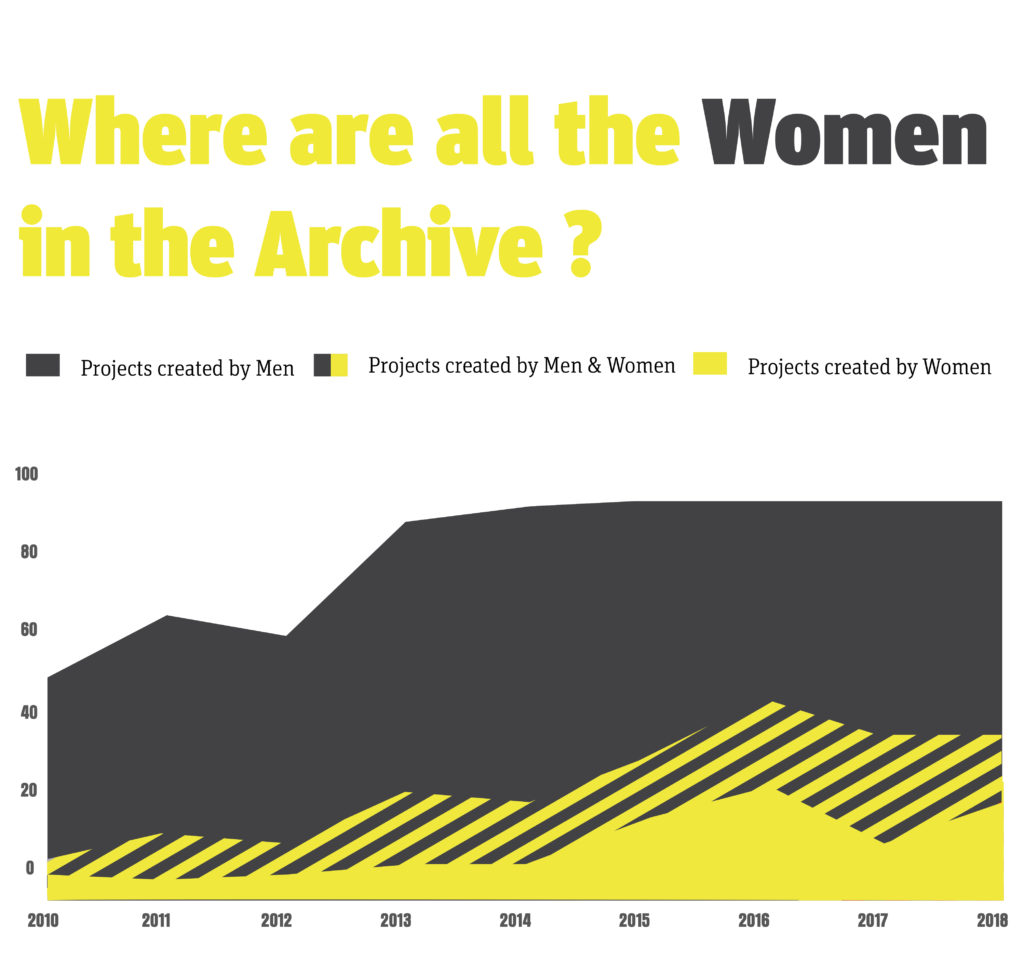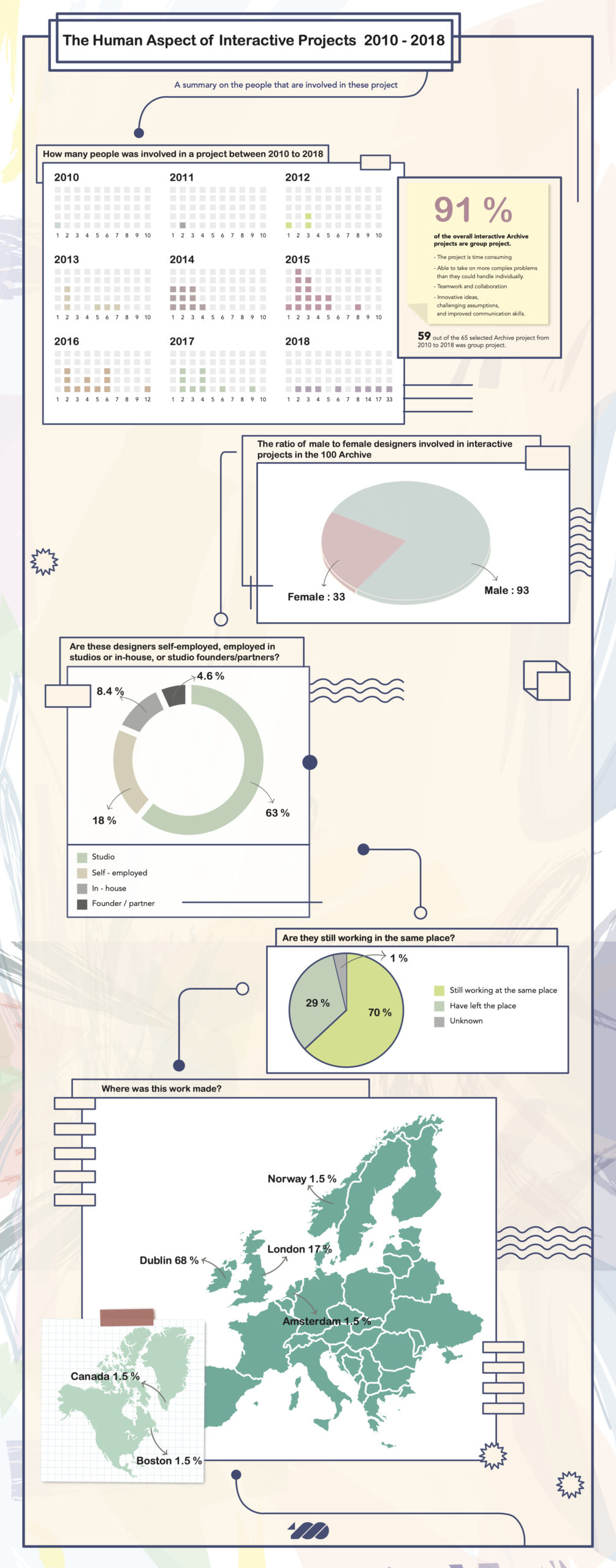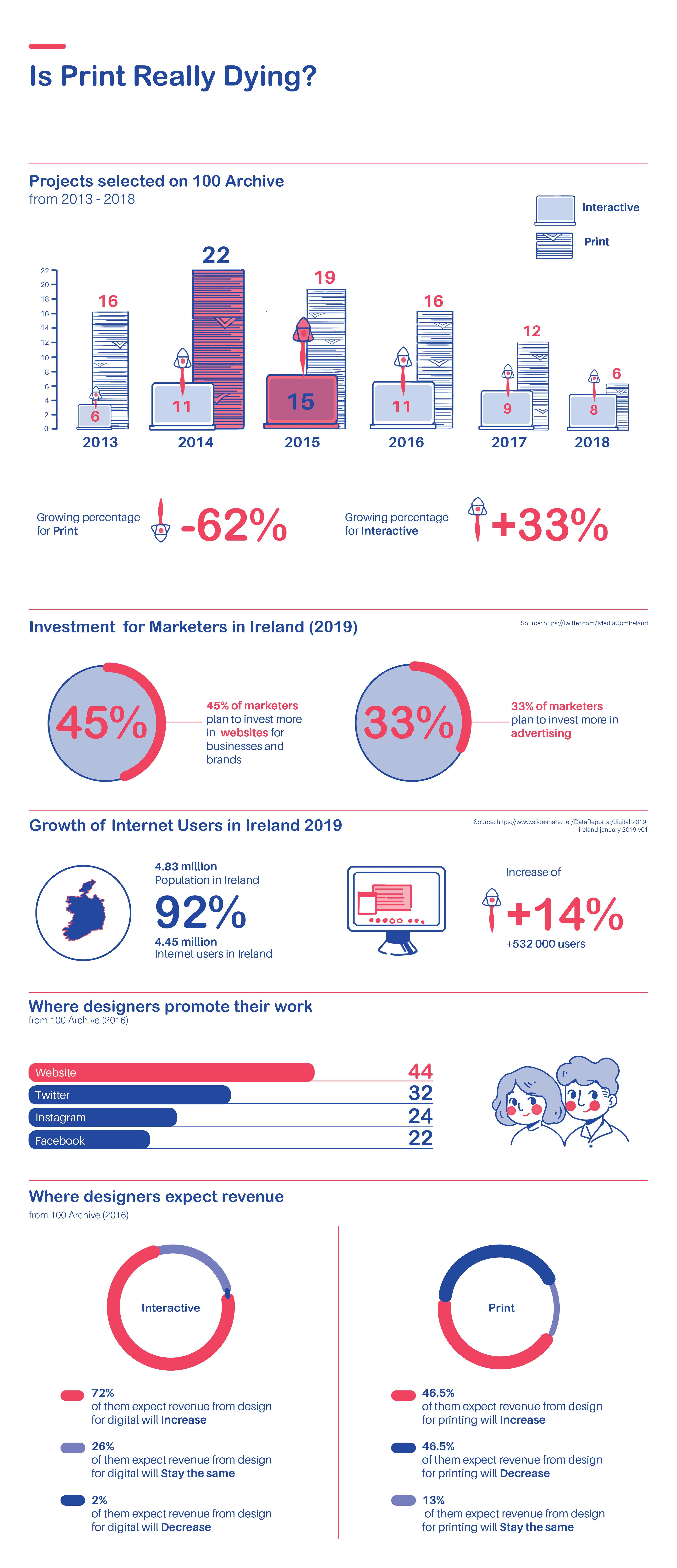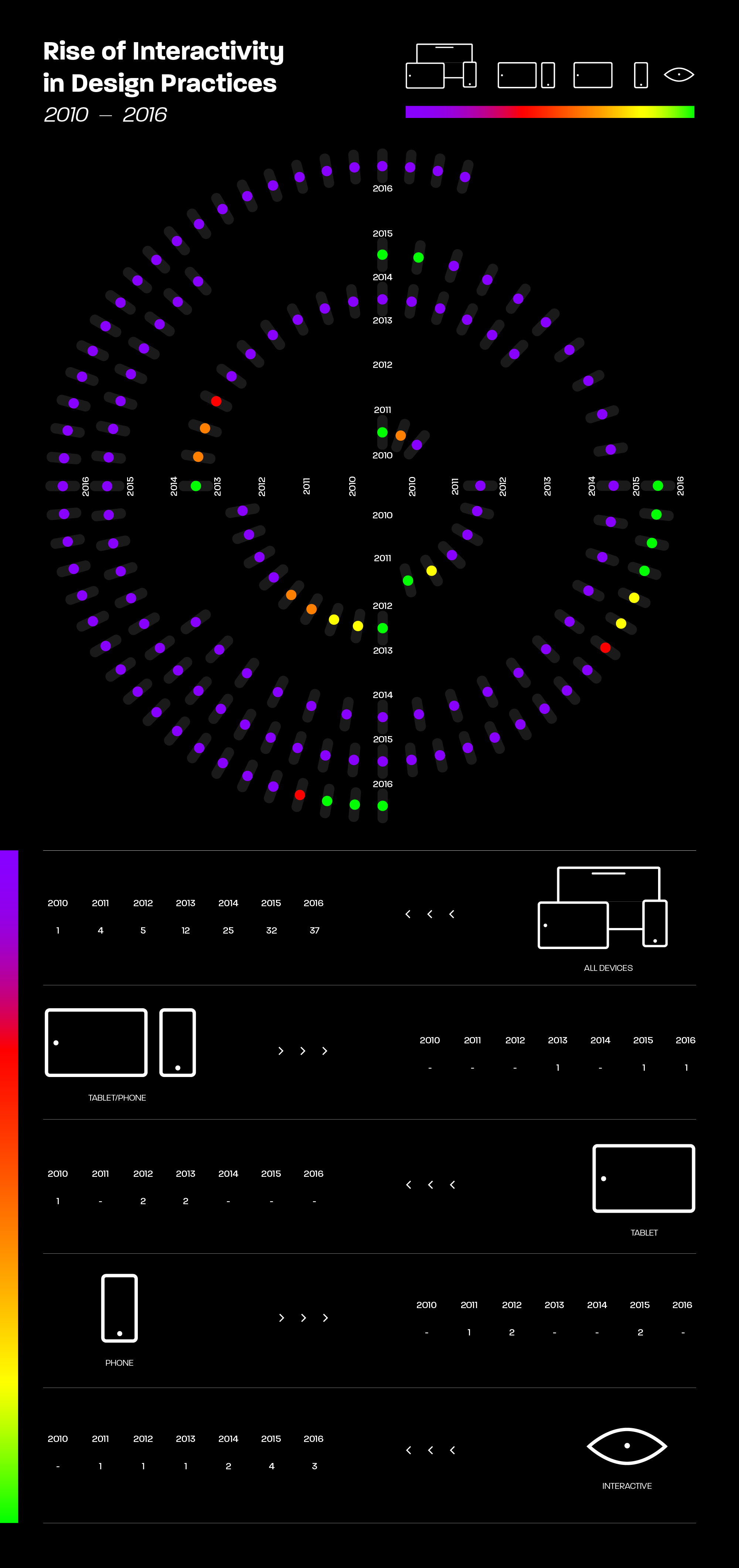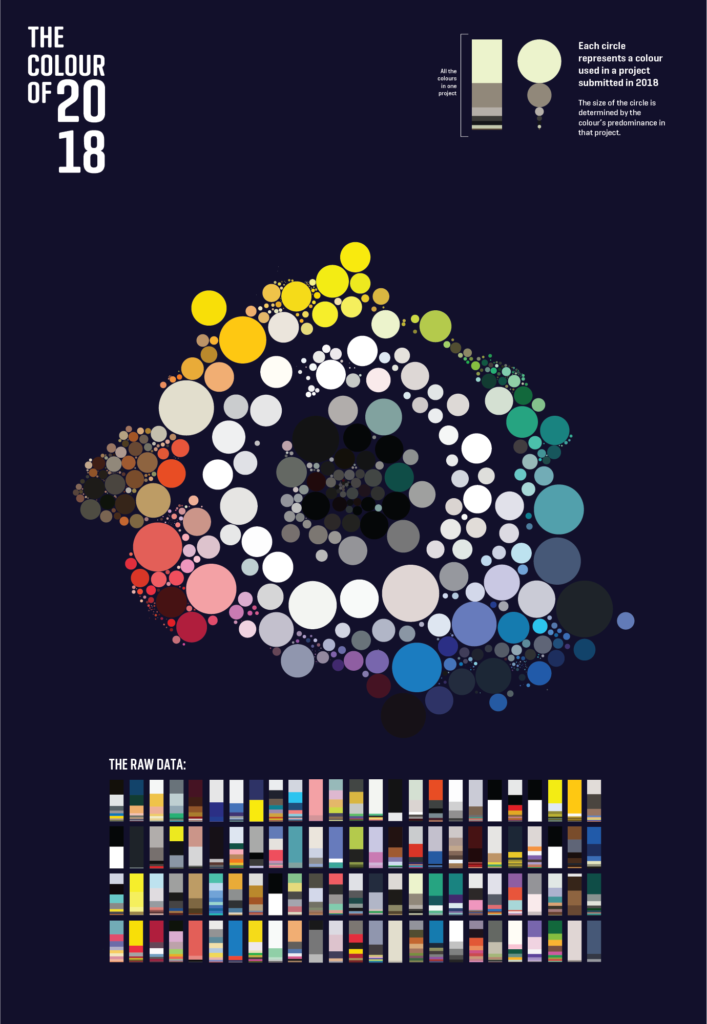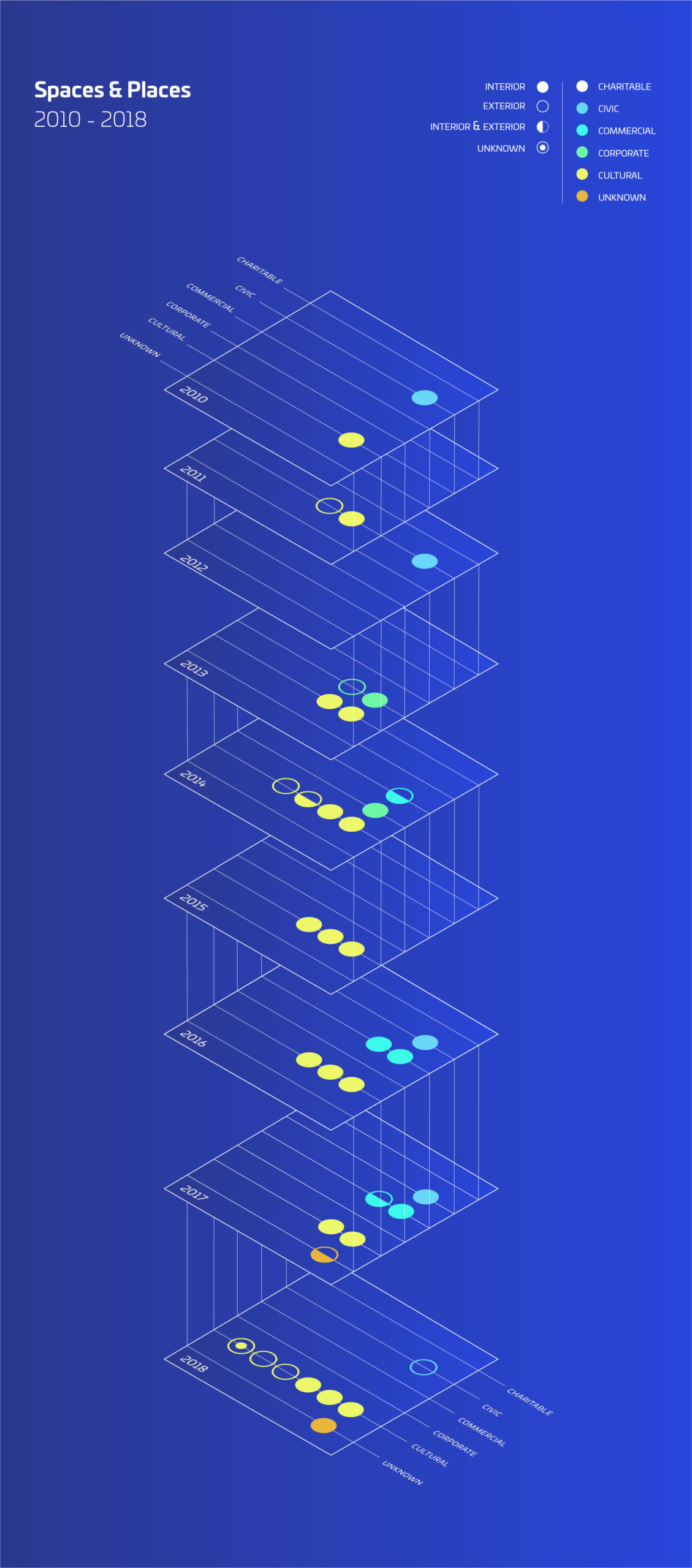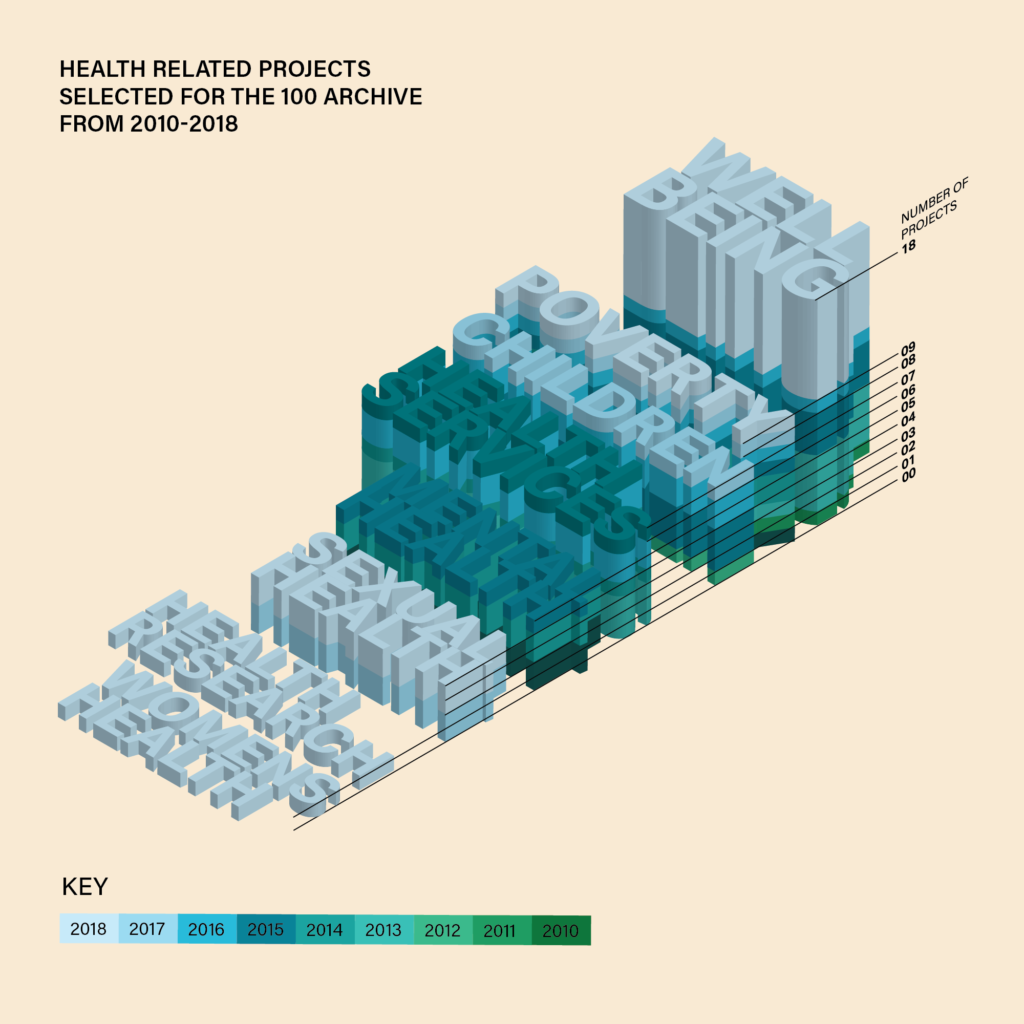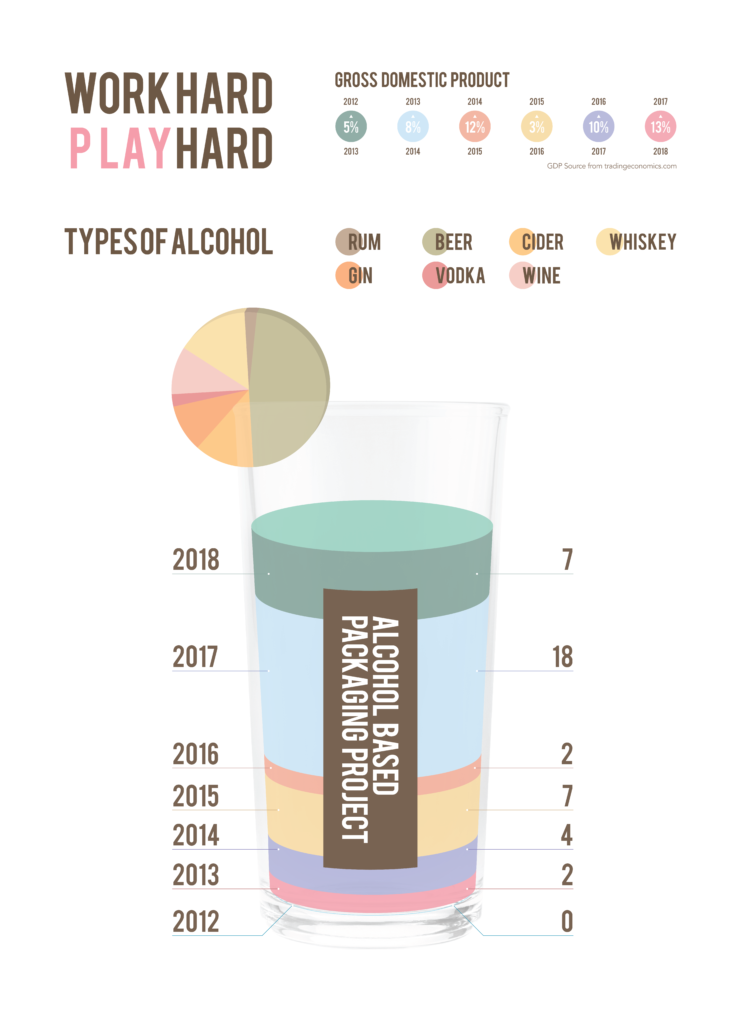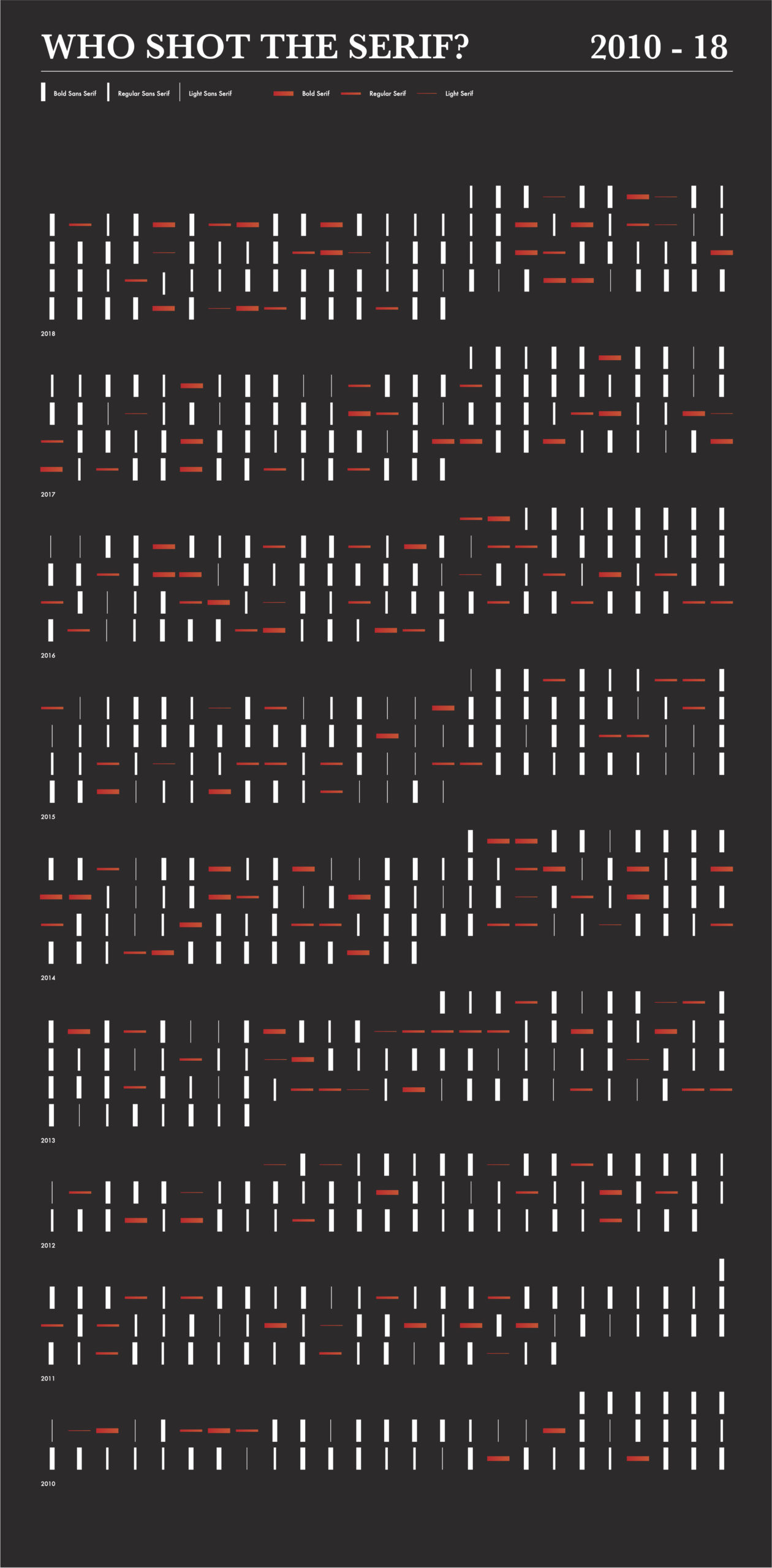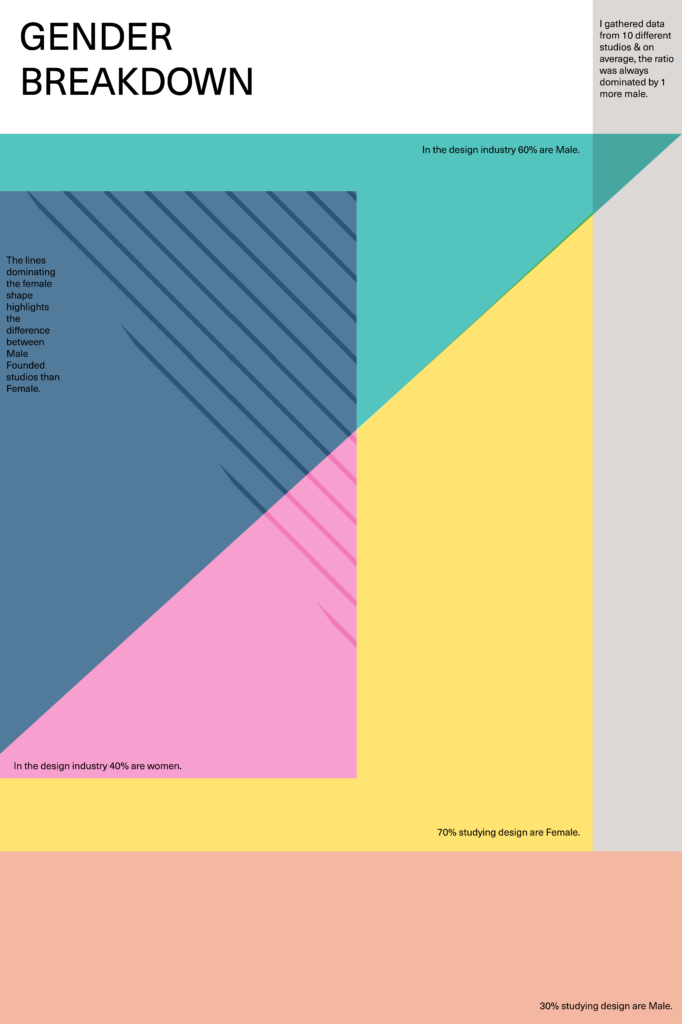100 x LSAD
Every year at Limerick School of Art and Design, the fourth year Graphic Design Communication students undertake a module in information design, where they are tasked with finding new and interesting ways of graphically representing information. This year they took the 100 Archive as their starting point and rigorously researched the who, what, when, where and why of design in Ireland in order to create a suite of data visualisations to support Map Irish Design.
Projects spanned deep dives into design in certain sectors such as the charitable sector and healthcare, publishing and the alcohol industry. Students explored specialist areas in design from interactive design and type design to environmental graphic design, and they questioned the future of print. They interrogated formal qualities in 100 Archive submitted projects such as type choice and use of colour, and they dissected the industry in terms of skills, working hours, pay and gender representation. Three proposals for interactive projects poke fun at rivalries in the sector, how design studios are named, and what makes a successful 100 Archive submission.
The brief was led by Year Four Tutor and regular 100 Archive collaborator Eamon Spelman, with visits and tutorials from Map Irish Design’s identity designer Keelin Coyle and 100 Archive’s Aideen McCole. Below is a selection of 18 projects completed by the students.
- 100 x LSAD
- 100 ARCHIVE CHEAT SHEET™
- Where are all the Women in Graphic Design?
- The Design Industry Unpacked
- Studio Name Generator
- Design for a Better World
- The Human Aspect of Interactive Projects 2010 – 2018
- Is Print Really Dying?
- Hot or Not
- The Rise of Interactivity in Design 2010-2018
- The Colour of 2018
- Spaces & Places
- Health projects from the 100 Archive 2010-2018
- Work Hard Play Hard
- Who Shot the Serif?
- The Rise of Editorial Design and the Decrease of Irish Book Sales
- Gender Breakdown
- 100 Archive Type Specimen
